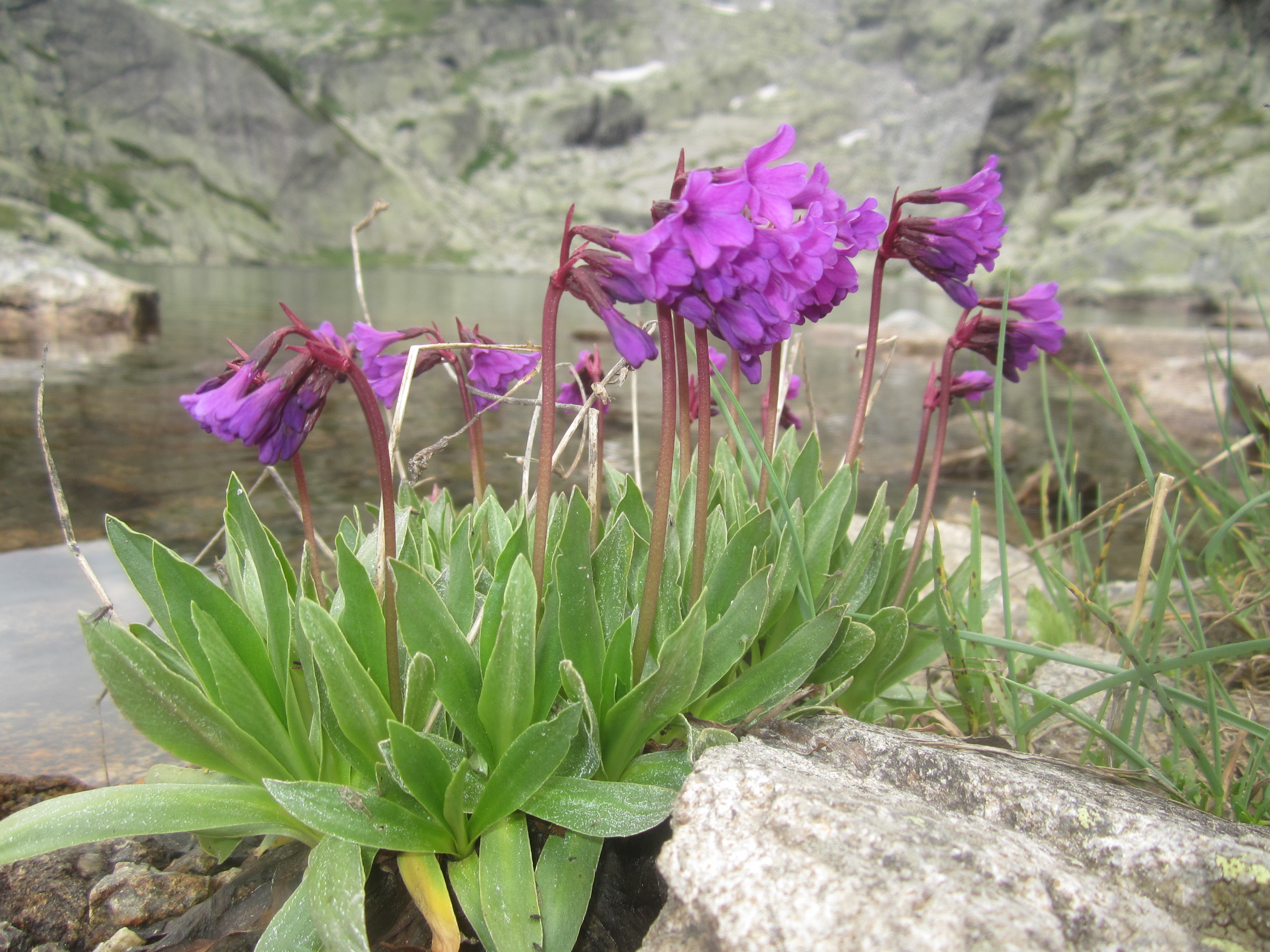Primula deorum on:
[Wikipedia]
[Google]
[Amazon]
''Primula deorum'', also known as Rila primrose, Rila cowslip or God's cowslip, is a 
flowering
A flower, sometimes known as a bloom or blossom, is the reproductive structure found in flowering plants (plants of the division Angiospermae). The biological function of a flower is to facilitate reproduction, usually by providing a mechanism ...
dicot
The dicotyledons, also known as dicots (or, more rarely, dicotyls), are one of the two groups into which all the flowering plants (angiosperms) were formerly divided. The name refers to one of the typical characteristics of the group: namely, t ...
plant of the genus ''Primula
''Primula'' () is a genus of herbaceous flowering plants in the family Primulaceae. They include the primrose ('' P. vulgaris''), a familiar wildflower of banks and verges. Other common species are '' P. auricula'' (auricula), '' P. veris'' (cow ...
'' in the family Primulaceae
The Primulaceae , commonly known as the primrose family (but not related to the evening primrose family), are a family of herbaceous and woody flowering plants including some favourite garden plants and wildflowers. Most are perennial though som ...
. This alpine plant is endemic
Endemism is the state of a species being found in a single defined geographic location, such as an island, state, nation, country or other defined zone; organisms that are indigenous to a place are not endemic to it if they are also found else ...
to roughly 63 km2 above the tree-line
The tree line is the edge of the habitat at which trees are capable of growing. It is found at high elevations and high latitudes. Beyond the tree line, trees cannot tolerate the environmental conditions (usually cold temperatures, extreme snowp ...
(especially around 2200 metres) in the Rila mountains in Bulgaria
Bulgaria (; bg, България, Bǎlgariya), officially the Republic of Bulgaria,, ) is a country in Southeast Europe. It is situated on the eastern flank of the Balkans, and is bordered by Romania to the north, Serbia and North Macedo ...
, where it grows in small groups in acid, boggy soil near streams and pools and in boggy soil. Its elongate green leaves form rosettes. The blooms are red-purple, borne in asymmetrical umbel
In botany, an umbel is an inflorescence that consists of a number of short flower stalks (called pedicels) that spread from a common point, somewhat like umbrella ribs. The word was coined in botanical usage in the 1590s, from Latin ''umbella'' "p ...
s high above the leaves. This plant has survived the last glacial period as a relict
A relict is a surviving remnant of a natural phenomenon.
Biology
A relict (or relic) is an organism that at an earlier time was abundant in a large area but now occurs at only one or a few small areas.
Geology and geomorphology
In geology, a r ...
organism.
It is sometimes offered as an ornamental, but is difficult to cause to flower. The best success comes from a well-aerated, wet medium consisting partly or entirely of sphagnum
''Sphagnum'' is a genus of approximately 380 accepted species of mosses, commonly known as sphagnum moss, peat moss, also bog moss and quacker moss (although that term is also sometimes used for peat). Accumulations of ''Sphagnum'' can store wa ...
; flowing water is advisable.
The name "God's cowslip" and the species epithet ''deorum'' refer to the presence of this species on Musala
Musala ( bg, Мусала ); from Arabic through Ottoman Turkish: from ''Musalla'', "near God" or "place for prayer" is the highest peak in the Rila Mountains, as well as in Bulgaria and the entire Balkan Peninsula, standing at .
With a topogr ...
, "God's Mountain", though it is much more common above Malyovitsa
Malyovitsa ( bg, Мальовица ) is a peak in the northwestern part of the Rila Mountain in southwestern Bulgaria. It is 2,729 m high and is one of the most popular tourist regions in the mountain. Its northern and eastern slopes are ste ...
, where it is the dominant plant in suitable spots.

References
{{Taxonbar, from=Q7243688 deorum Alpine flora Plants described in 1890 Endemic flora of Bulgaria Taxa named by Josef Velenovský